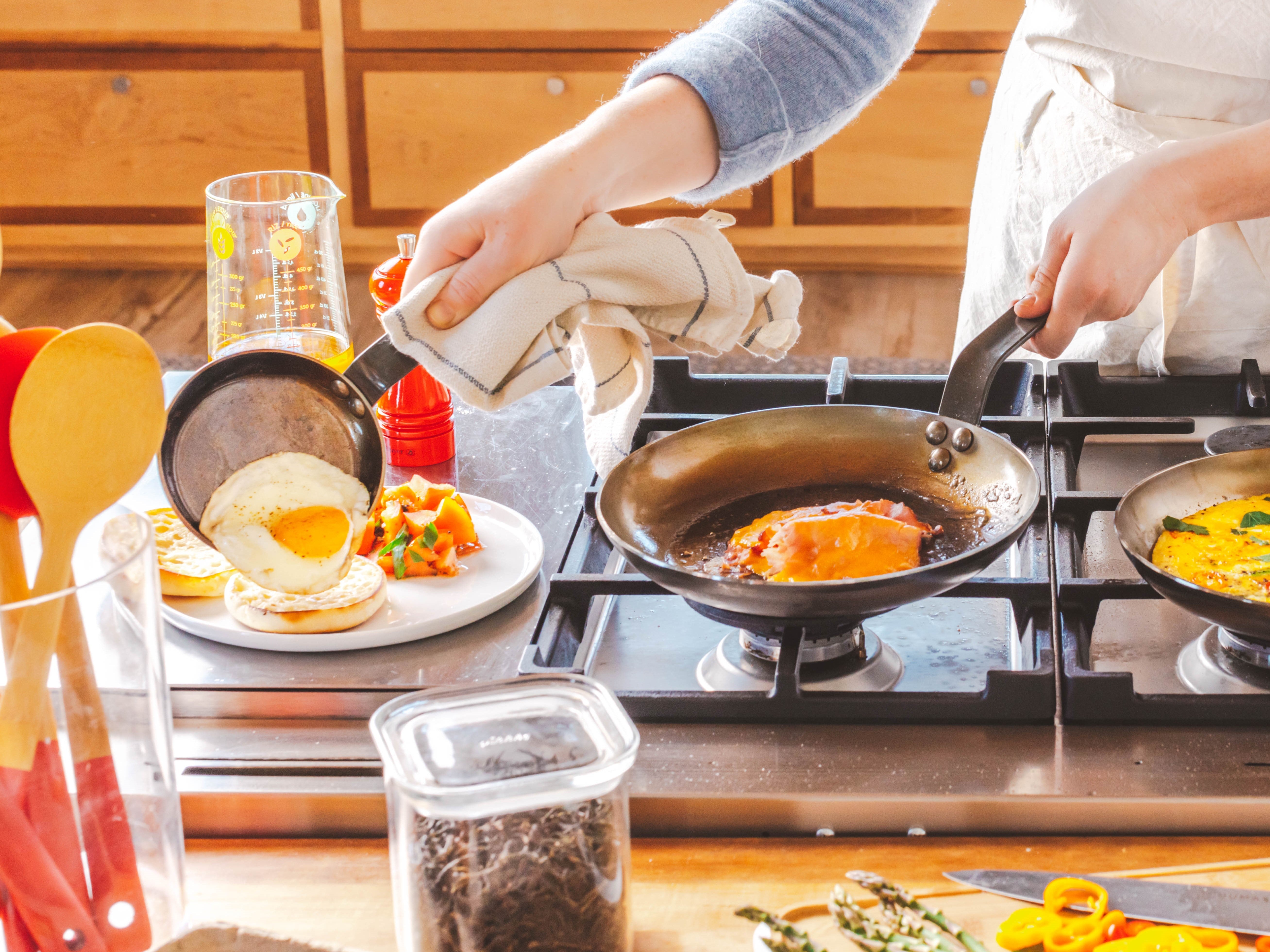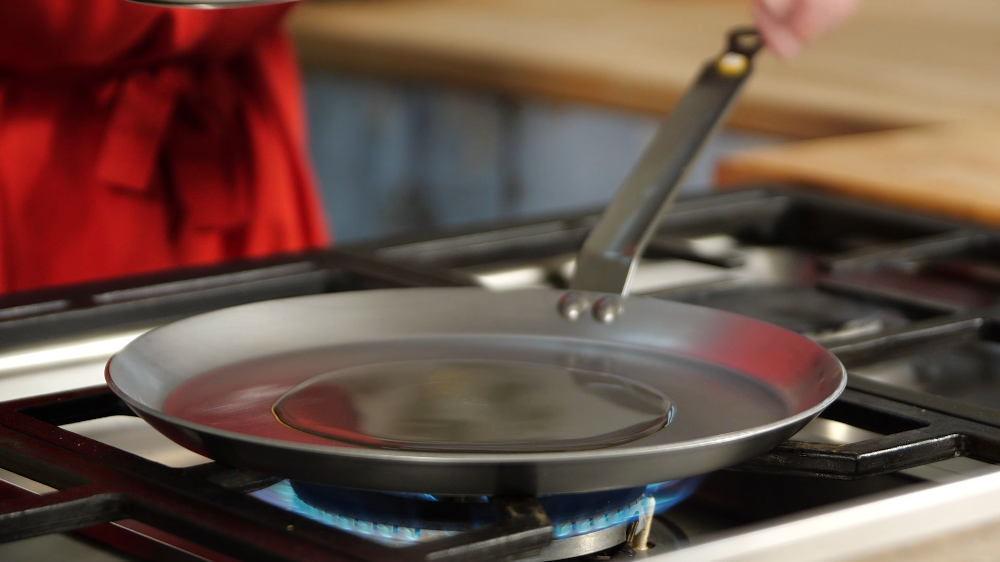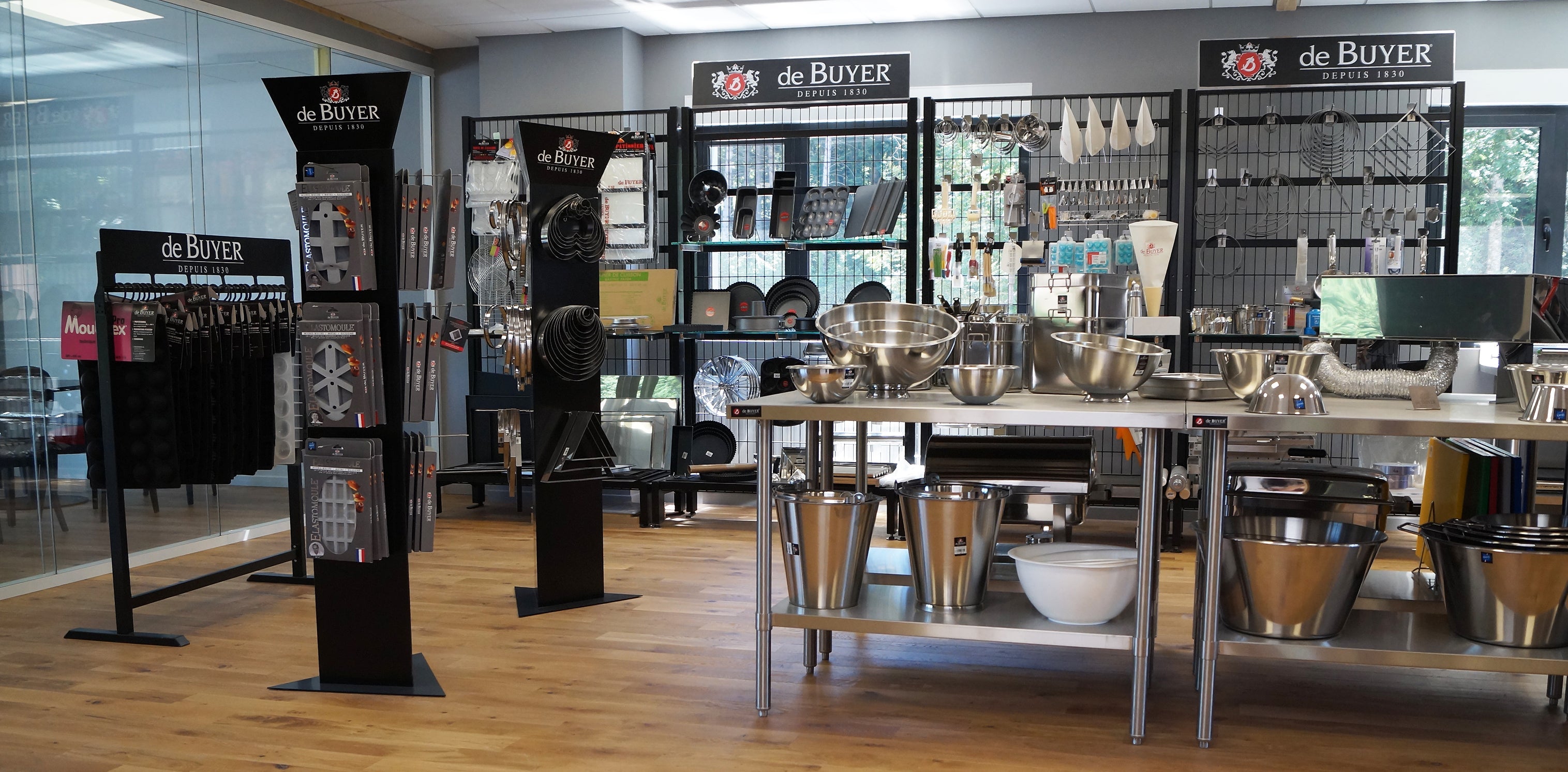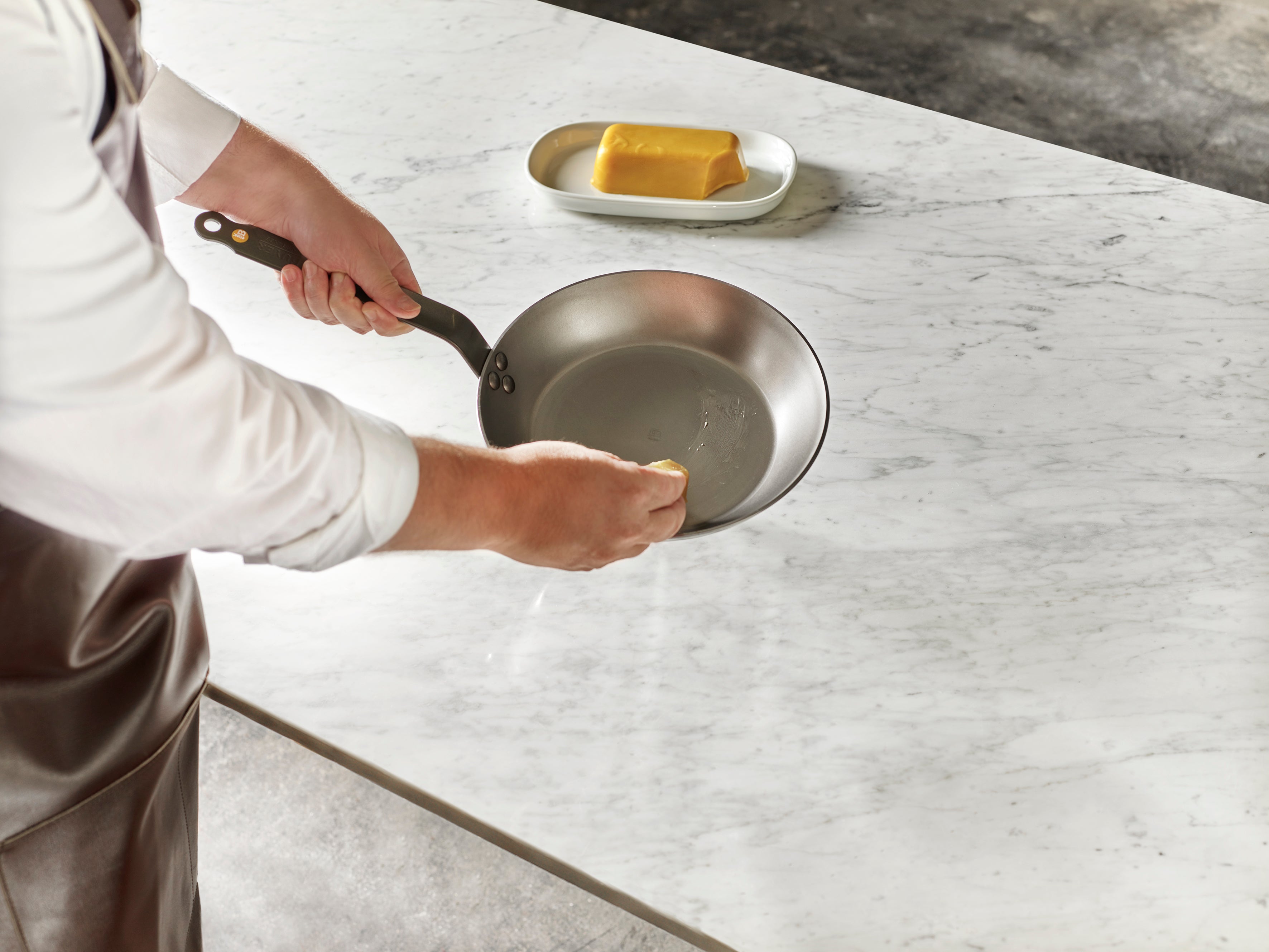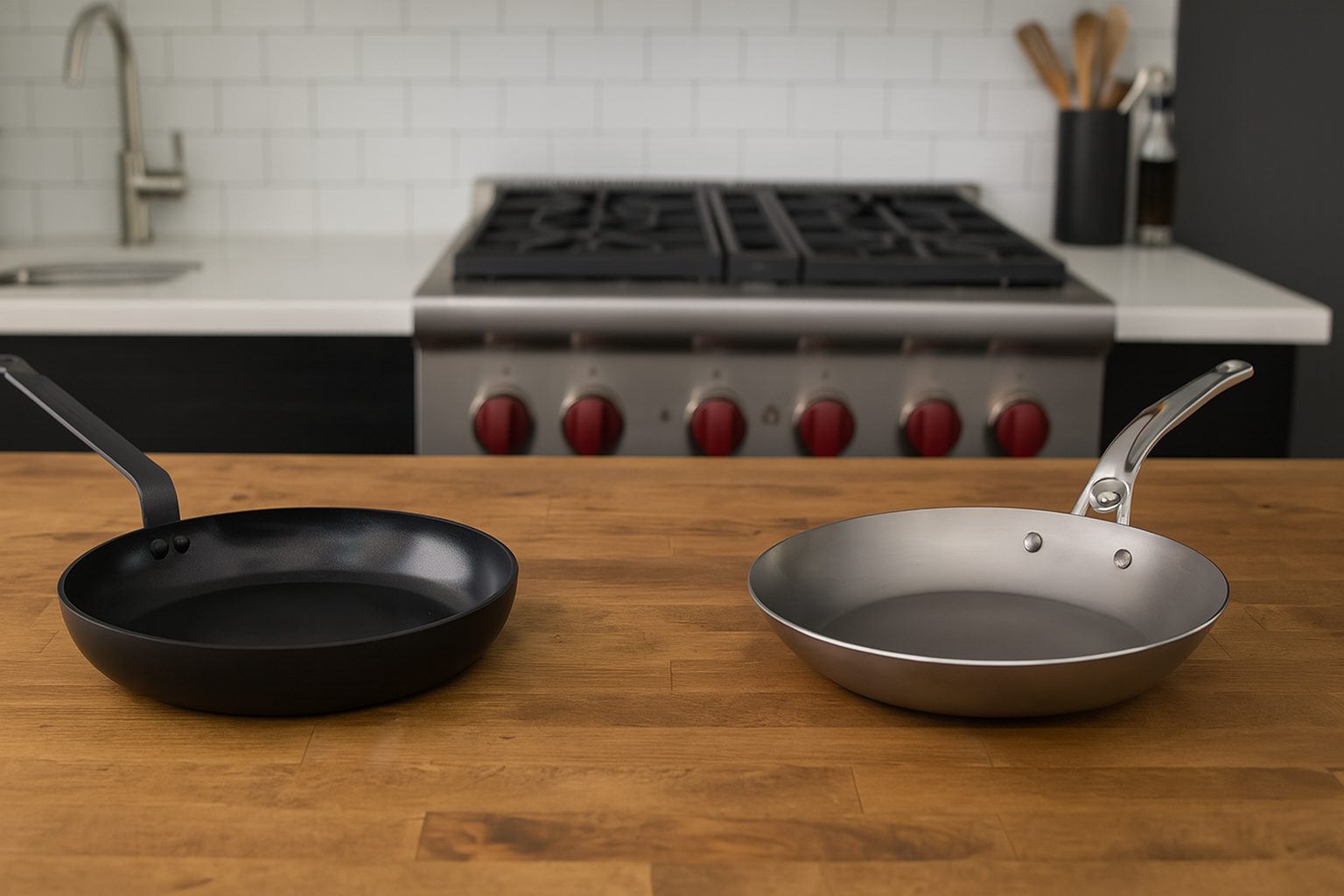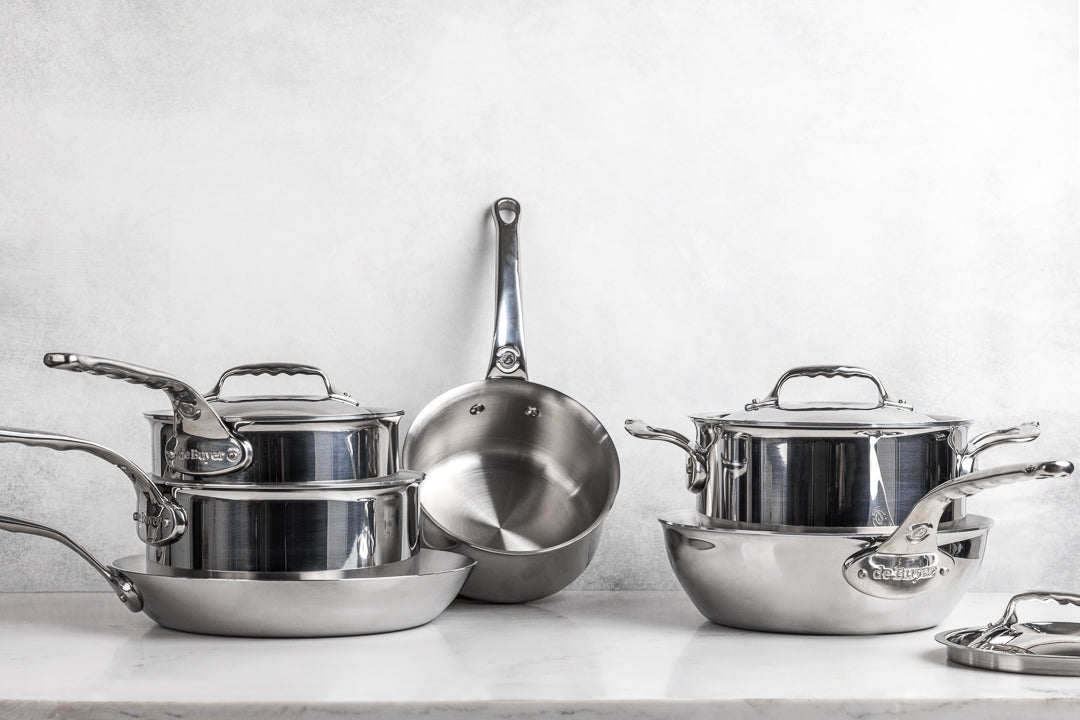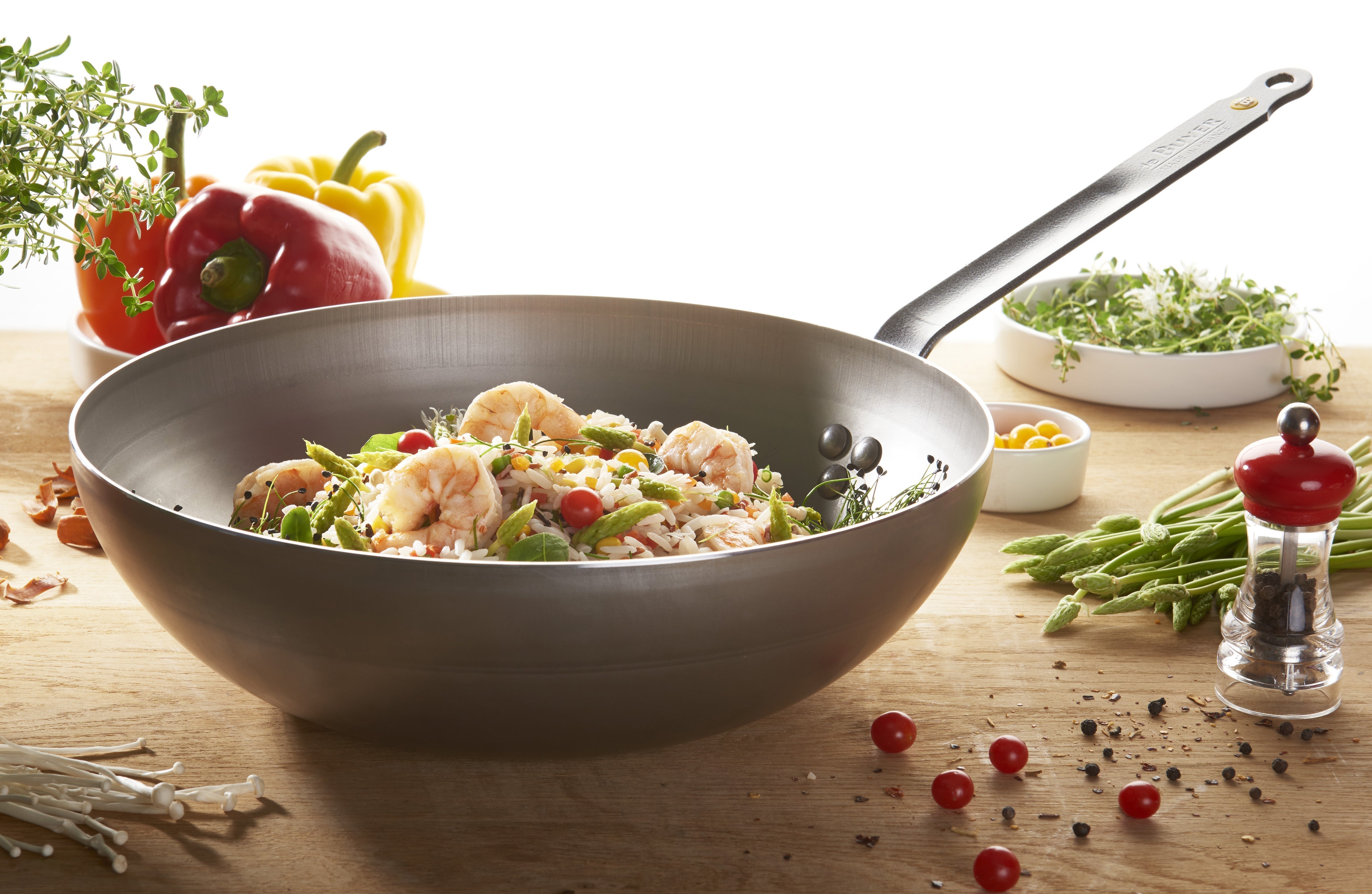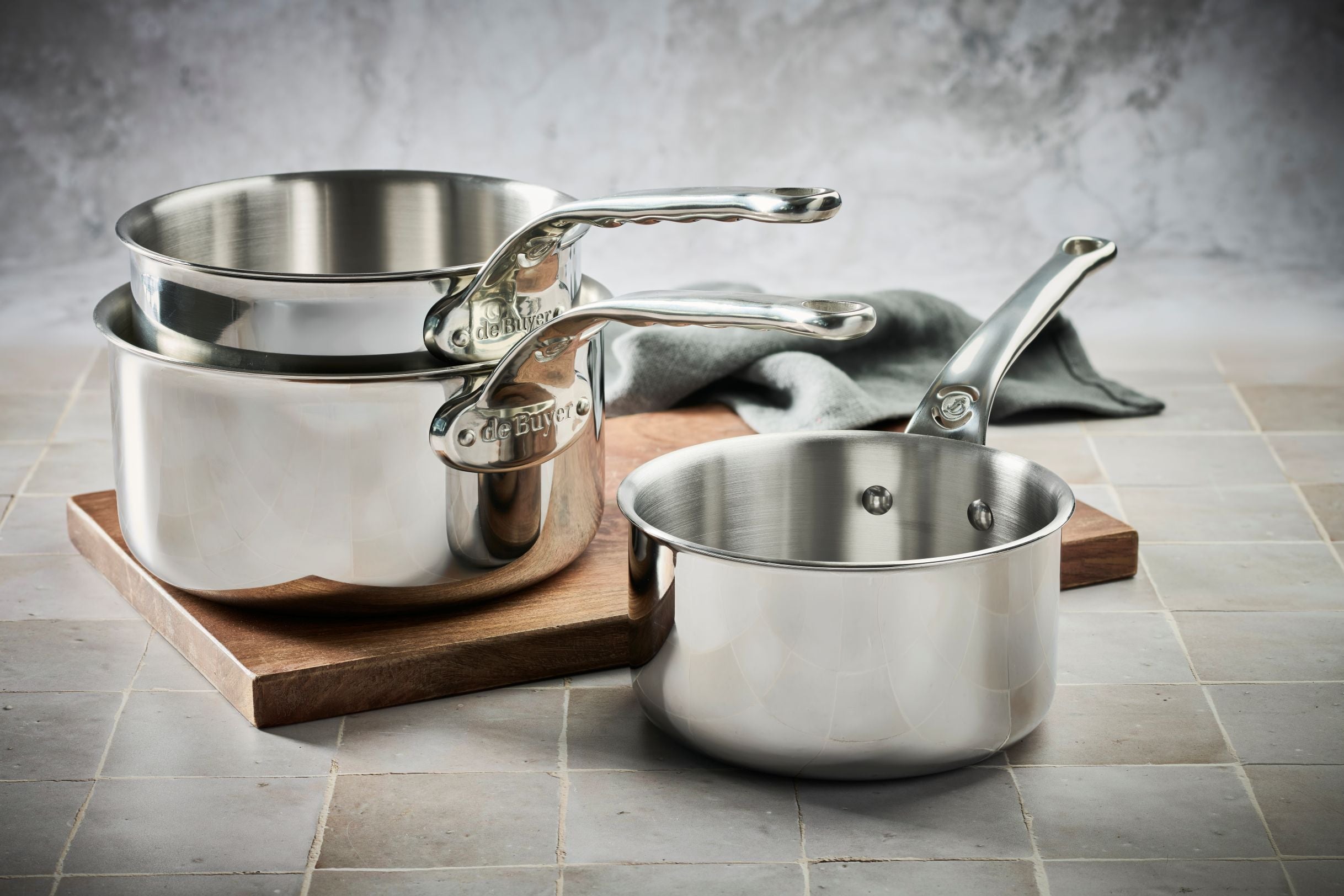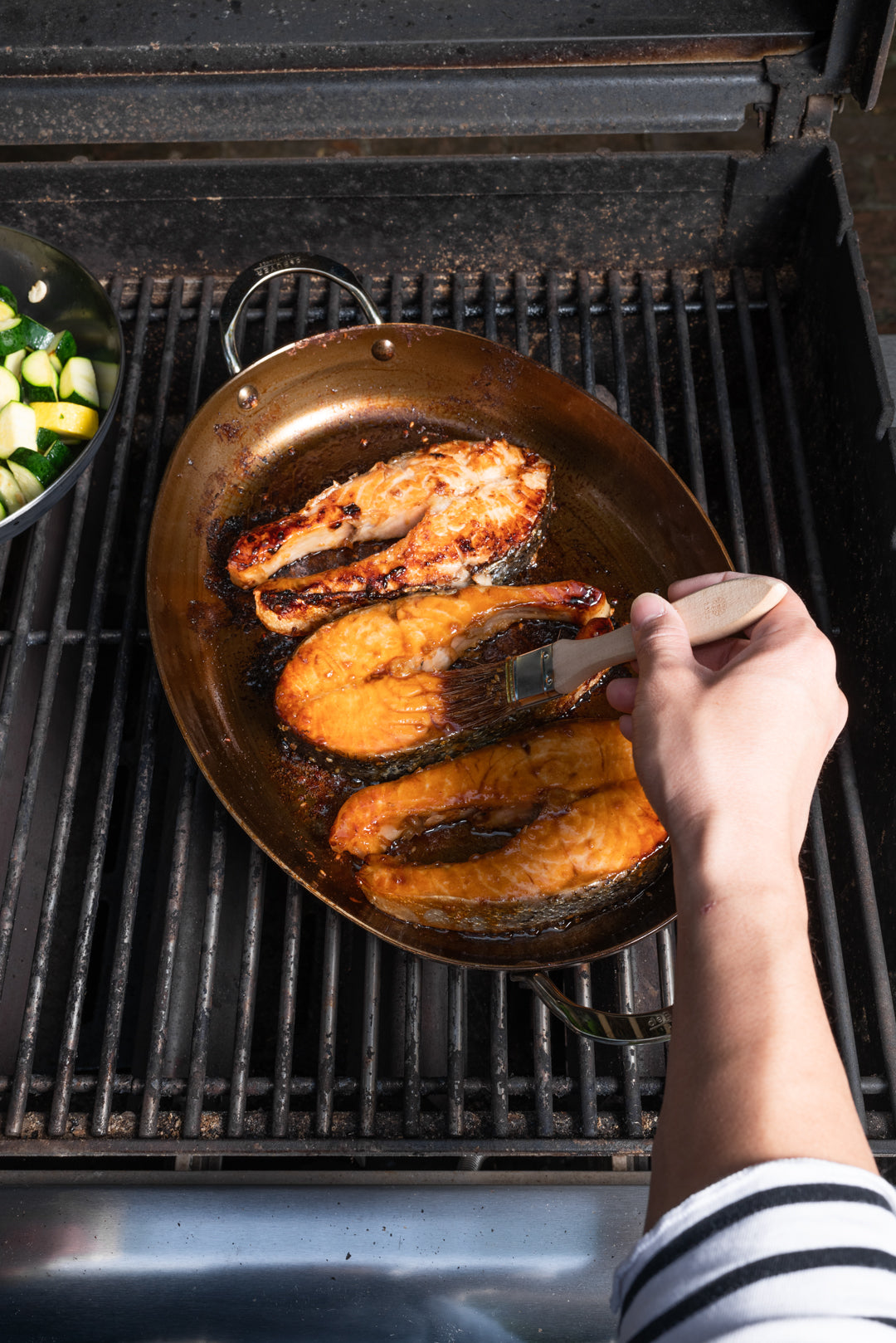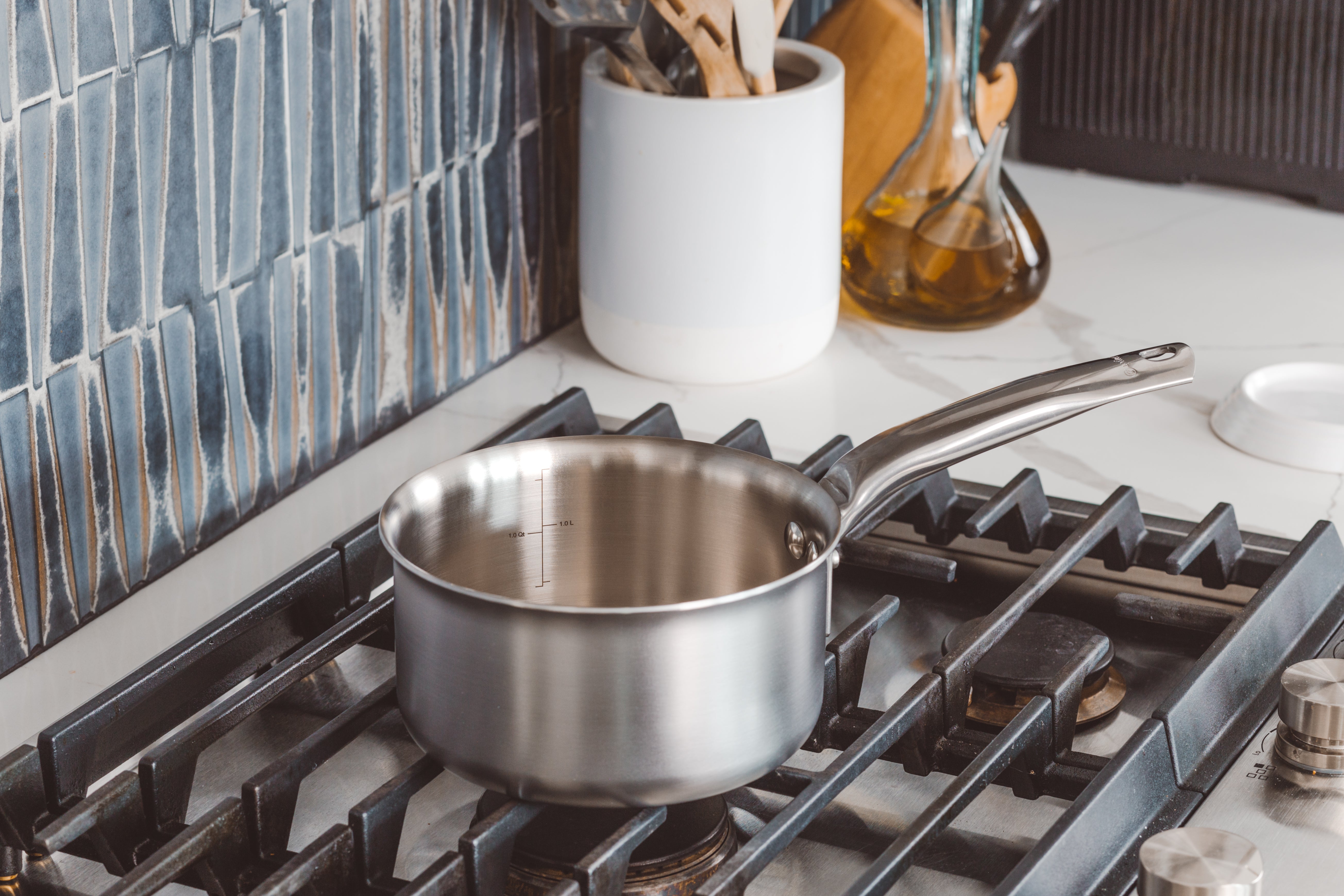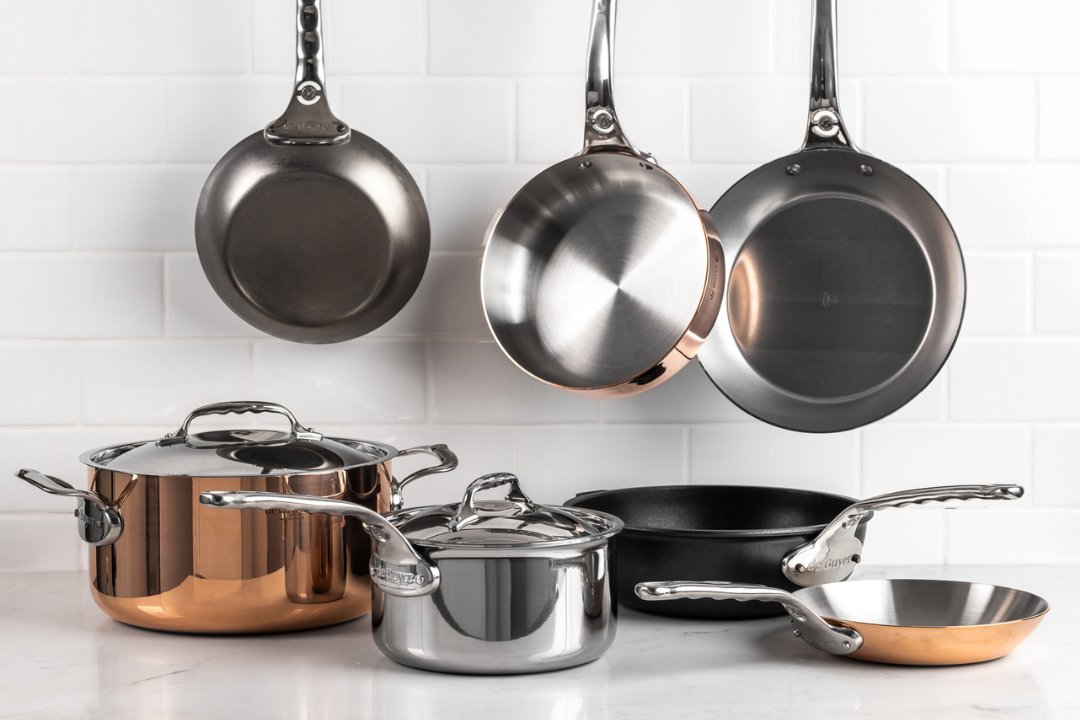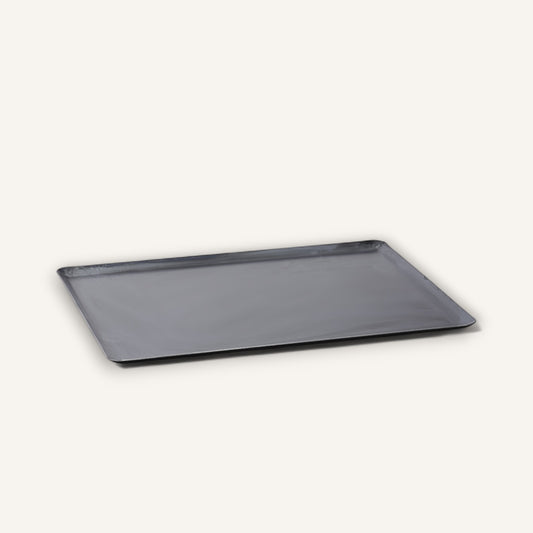Pan frying is a versatile and popular cooking method used in both professional and home kitchens. This technique achieves crispy, golden exteriors while maintaining tenderness inside.
In this article, we will cover the pan fry cooking method, including best practices, tips, and the ideal pans to use.
What is Pan Frying?
The pan frying cooking method is a technique where food is cooked in fat (usually oil or butter) in a skillet or pan over medium to high heat. Pan frying, also known as shallow frying, is a healthier, more user-friendly version of deep frying. Notably, pan-fried food is not fully submerged in the frying oil.
This method is perfect for creating a crispy, caramelized exterior while preserving moisture. During deep fat frying, the food is completely submerged in hot oil, requiring chefs to heat and dispose of large amounts of frying oil. It also takes longer for this amount of oil to reach the appropriate temperatures for frying.
Pan-fried foods are typically flipped while frying, so all surfaces come in contact with the hot oil or butter. This cooking process limits the exposure to the heat transfer medium (oil), which is slightly healthier than deep-frying.
Best Foods for Pan Frying
Pan frying is ideal for foods that benefit from a crisp exterior but do not require deep immersion in oil. Pan frying is sometimes the first step in the cooking process. For example, you may render chicken thigh skin in a pan fry and then finish off in the oven. Keep this in mind as you consider the best foods to pan fry.
-
Proteins: Chicken breasts, fish fillets, pork chops, shrimp, and tofu
-
Vegetables: Potatoes, zucchini, eggplant, mushrooms, and onions
-
Breads and Snacks: Breaded chicken, schnitzels, or falafel
How to Pan Fry: Step-by-Step Guide
Use these instructions to learn how to pan fry properly. The most important step is practice. Perfecting your pan fry technique requires iteration.
-
Choose the Right Pan: Use a skillet or frying pan with a flat bottom for even heat distribution. A wider pan allows food to cook evenly.
-
Preheat the Pan: Preheat the pan over medium-high heat before adding any oil to ensure an even cooking surface. You’ll know the pan is properly heated when water beads on the cooking surface.
-
Add Oil: Pour enough to coat the bottom of the pan and allow it to heat until shimmering but not smoking. The oil should go up the sides of the food just a little bit. Look at the oil from an angle to see the shimmer.
-
Add the Food: Carefully place the food in the pan, ensuring it’s not overcrowded. Overcrowding can lower the heat and cause the food to steam instead of fry.
-
Cook and Flip: Cook the food on one side until golden and crispy, then flip it over to cook the other side. Maintain a steady temperature to avoid burning or undercooking.
-
Option 1: Drain and Rest: Once cooked, transfer the food to a paper towel to absorb excess oil. Allow it to rest briefly before serving.
-
Option 2: Cook Off in the Oven: Some foods, like thicker proteins, must be cooked in the oven after pan frying. After oven cooking, allow it to rest briefly before serving.
Best Pans for Pan Frying
The best techniques will only get you so far. Chefs and home cooks need high-quality pans designed to perform. Review your best options and the different materials available for pan frying.
Stainless Steel Pans
These pans are perfect for achieving a good sear and maintaining even heat. They are ideal for proteins like fish and chicken. de Buyer's AFFINITY Stainless Steel Fry Pan combines modern style with top-tier performance. Its sleek, shiny design features a 5-layer construction for exact temperature control and even heat distribution.
The 3-ply ALCHIMY Stainless Steel Fry Pan delivers even heating and precision with its durable 18/10 stainless steel interior. The brushed finish is easy to clean and resists marks. Both options are oven and induction-safe. They are also dishwasher safe, though we recommend hand washing all cookware.
Cast Iron Skillets
Cast iron is great for heat retention and achieving crispy exteriors. These pans are excellent for thicker cuts of meat or vegetables; however, they may be hefty and slightly less maneuverable than other pan options.
Carbon Steel Pans
Carbon steel pans are lighter than cast iron but have similar heat retention properties. They are perfect for quick, high-heat pan frying. de Buyer’s Mineral B Pro Fry Pan and Blue Carbon Steel Fry Pan are excellent choices for pan frying.
The Blue Carbon Steel Country Fry Pan combines rustic charm with professional-grade performance. Its lighter weight makes it easier to handle than traditional cast iron, while its higher straight sides provide excellent capacity and versatility. The oven-safe design (up to 500°F) allows seamless stovetop-to-oven cooking, and the distinctive blue finish aids in seasoning and resists corrosion.
This Mineral B Carbon Steel Country Fry Pan shines with its robust construction and superior heat conduction. The natural nonstick surface improves with use and offers lasting durability.
Both pans are worthy additions to any kitchen and promise years of reliable culinary performance.
Nonstick Pans
These fry pans are useful for delicate foods like eggs and fish that may stick in other pans. However, they require careful temperature management and handling to avoid damaging the coating.
Tips for Perfect Pan Frying
We’ve gathered some practical tips to ensure the best pan frying results.
-
Maintain Consistent Heat: Keep the oil at a steady temperature for an even cook to avoid burning the food.
-
Use a Thermometer: To ensure oil is at the right temperature (around 350°F), use a thermometer or test with a small piece of food.
-
Don’t Overcrowd the Pan: This is crucial to maintain high heat and crispiness. Fry in batches if necessary.
-
Pat the Food Dry: Before frying, pat proteins or vegetables dry with a paper towel to remove excess moisture, which can cause splattering.
-
Rest the Food: After frying, let the food rest to allow juices to redistribute and to prevent it from becoming soggy.
Common Mistakes to Avoid When Pan Frying
Pan frying isn’t an introductory cooking method, and some things that can go wrong. Memorize these common mistakes to avoid making them.
-
Too Much Oil: Avoid using excessive amounts of oil, which can make the food greasy and even lead to accidental deep frying.
-
Using the Wrong Pan Size: Using a pan that’s too small can lead to overcrowding, and a pan that’s too large may waste oil and energy.
-
Not Letting the Pan Heat Up: Preheat the pan to achieve a perfect sear. It ensures that moisture in the food evaporates from the surface while the added fat creates a smooth, nonstick layer for cooking.
-
Not Resting the Food: Allow the food to rest briefly after frying for optimal texture and flavor. This is especially necessary for proteins.
Perfect Your Pan Frying Skills with de Buyer Cookware
Pan frying is an easy and efficient cooking method but requires the right pan, technique, and attention to detail. We recommend that you experiment with different foods and methods to perfect your pan frying skills.
Browse de Buyer’s cookware collection and discover frying pans designed for optimal pan frying results.
